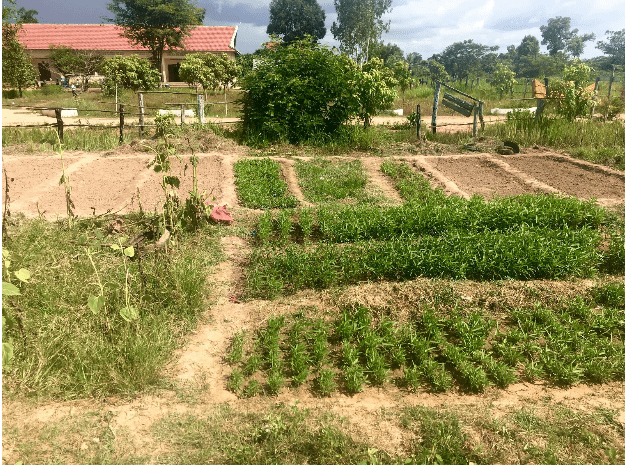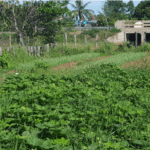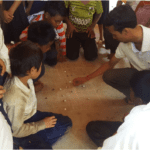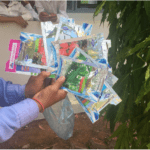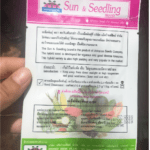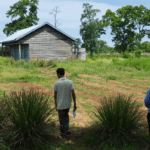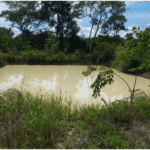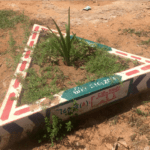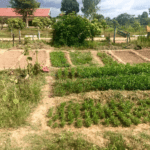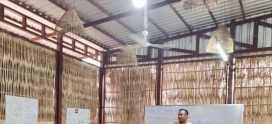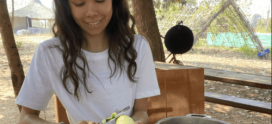Samrong diary 2
Today we’re celebrating the Royal Ploughing Ceremony in Cambodia. This national public holiday is celebrated yearly in Thailand and Cambodia to mark the beginning of rice growing (rainy) season. Part of the purpose is also to hold prayer for a bountiful harvest. The event is led by the King who symbolically ploughs a furrow in some ceremonial ground with two oxen hitched to a wooden plough; court officials sow rice seeds behind them. Then, the cows are led to seven plates of food containing rice, corn, soybeans, sesame, water, grass, and rice wine. Based on what they choose to eat, predictions are made about the coming year. For instance, if the cows eat grass it can indicate a disease epidemic. On the following day, farmers come to share their challenges with the Prime Minister. These rituals demonstrate the historic and continued importance of agriculture for the Cambodian people. It is a time to acknowledge and honor the cycles of farming as they are intertwined with the country’s identity.
This past week in Samrong has been a long one for us. We have been diligently preparing materials for our upcoming trainings with teachers and with CIDO staff. This week we’ll be leading 2 all-day trainings with a total of 47 School Garden Facilitators on Integrated Pest Management and Teaching Methods for Garden-based Education. In addition, we’ll be leading a half-day training with CIDO on Organic Standards and Best Management Practices. The nerdy part of me gets excited by doing research and putting together presentations to share information about sustainable, regenerative agriculture.
However it is a bit challenging for us to know how to make these trainings relevant to Cambodia’s environment (including the abundance of insects), economy and education system as it is very different from our country. We are trying to share our experiences and knowledge with organic agriculture in a way that complements their local knowledge. We are unsure how it will go with the language barrier; fortunately Ratana, the Executive Director with CIDO, will be helping us translate. Kyle and I have never led workshops that are so long or with so many people so it will be a good learning experience!
On Friday of this past week we had the opportunity to visit 11 schools in Samrong district. Some school gardens in especially low-lying areas have experienced flooding already from the recent rains (see photo below)
The soils are not porous enough for water to infiltrate, especially at this rate and volume. This obviously presents a big challenge to growing and can lead to anaerobic conditions in the soil. A fast potential solution is to dig channels around the outside of the garden to collect water. However it is only a potential solution because it’s not getting at the root of the issue which is compacted soil leading to erosion. Long-term solutions improve the soil structure through adding organic matter (compost), cover cropping and keeping the ground covered with perennials, and minimizing tillage.
A few schools haven’t prepared the beds yet for planting or are just beginning (photo 2 shows activity at Akphiwat school) . At most schools we got to meet the School Garden Facilitator and often the Principal or other school leaders. The young students were all very curious about us and excited to say “hello!
Here are some other highlights:
These visits helped us to get a better understanding of the ASPUS Program as a whole by seeing a variety of gardens and learning how the production is affected by the location, the age/number of students and the motivation of the teacher.
The highlight of our day though was visiting the Monk’s Community Forest. We had the honor of meeting and talking with Venerable Bun Saluth, who is courageously leading the conservation efforts in protecting the forest (and wildlife) from illegal logging and hunting. Deforestation is a massive issue here in Cambodia: Forests once covered about 70% of this country, yet only about 30% remains today because of logging and the expansion of extractive agriculture. This local initiative uniting spirituality and environmental stewardship is so inspiring to us! Please watch this video to learn more about the project:

